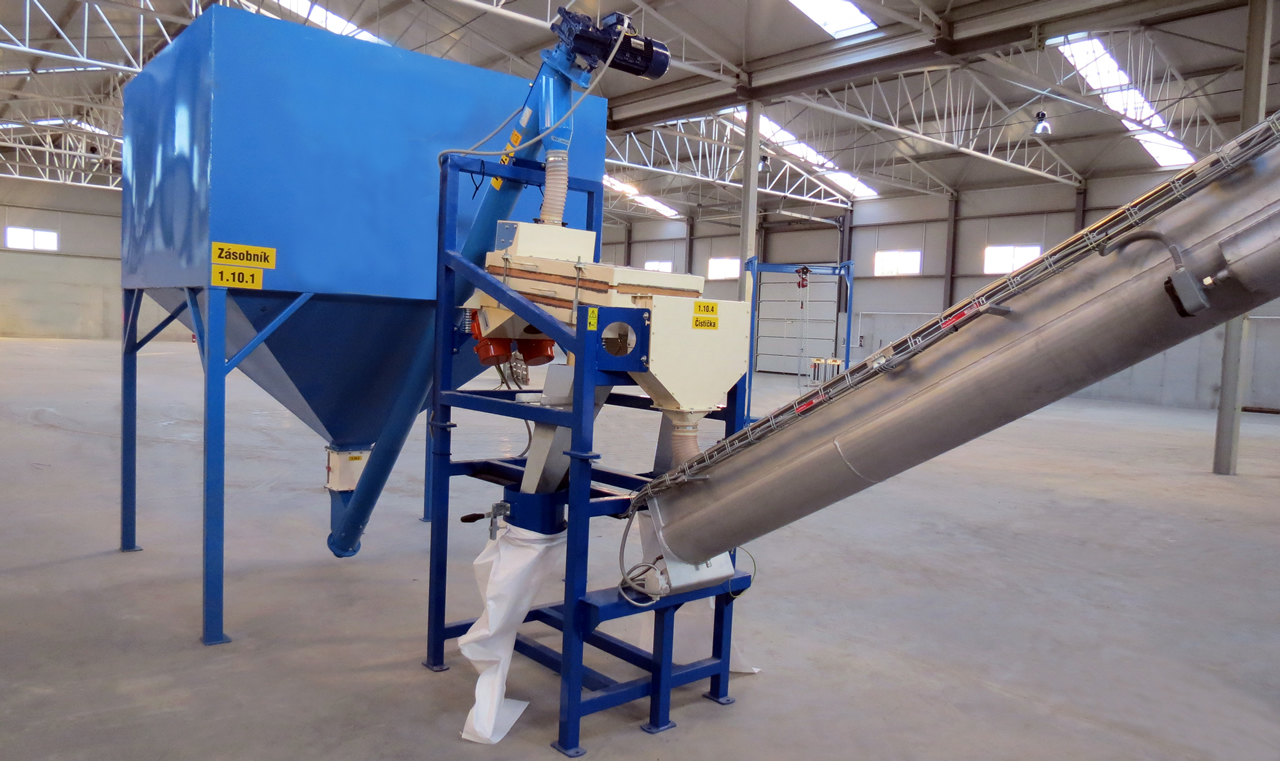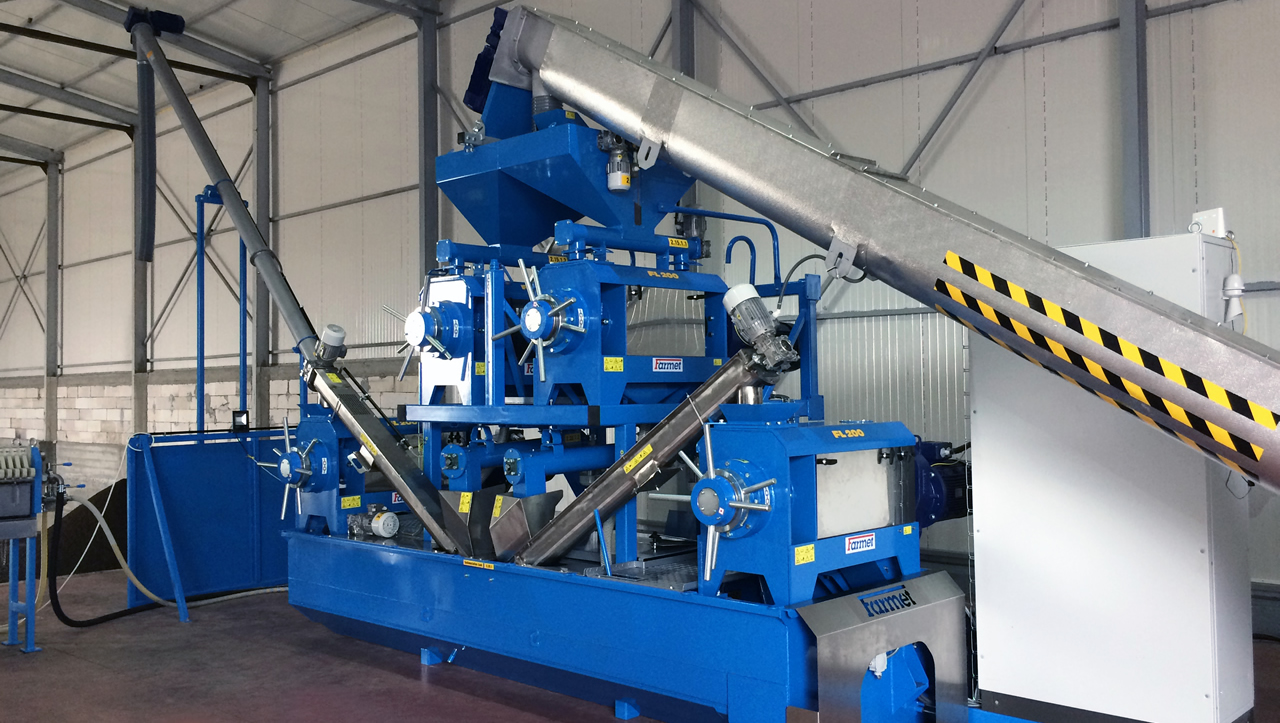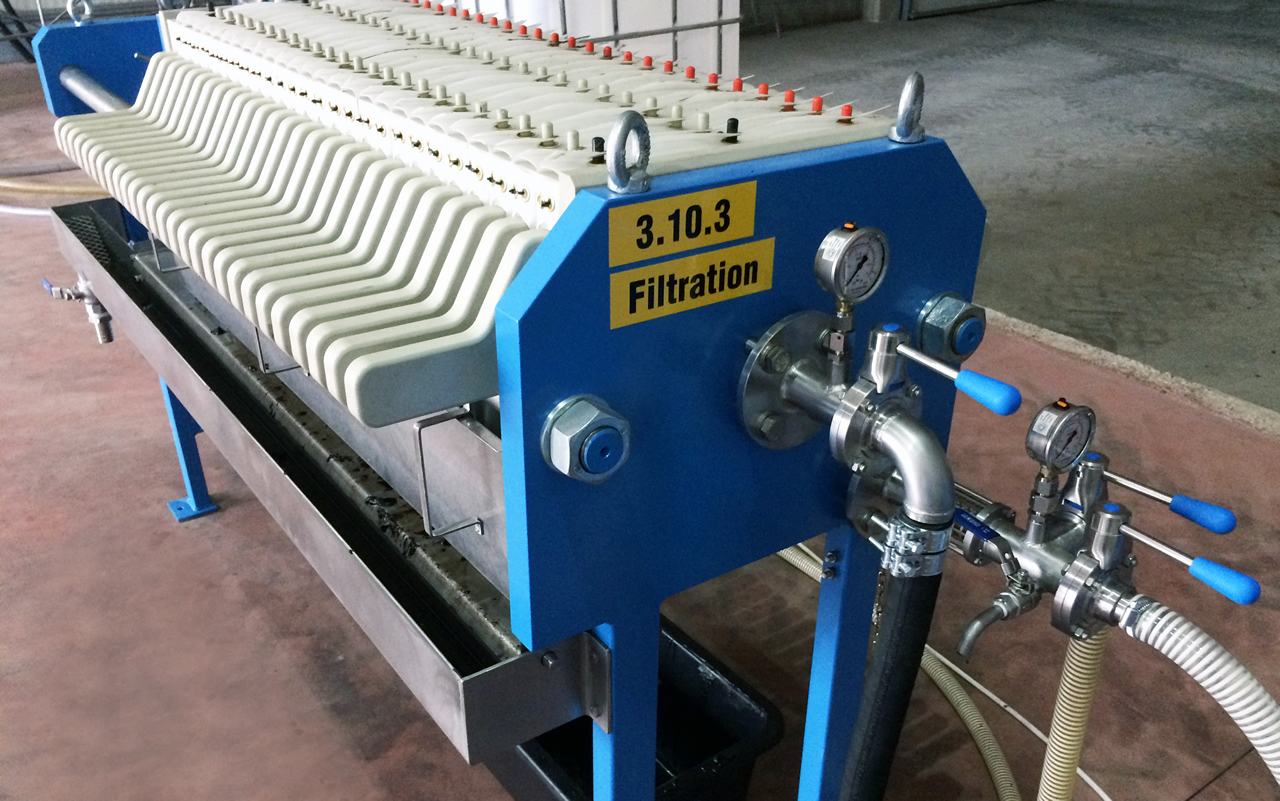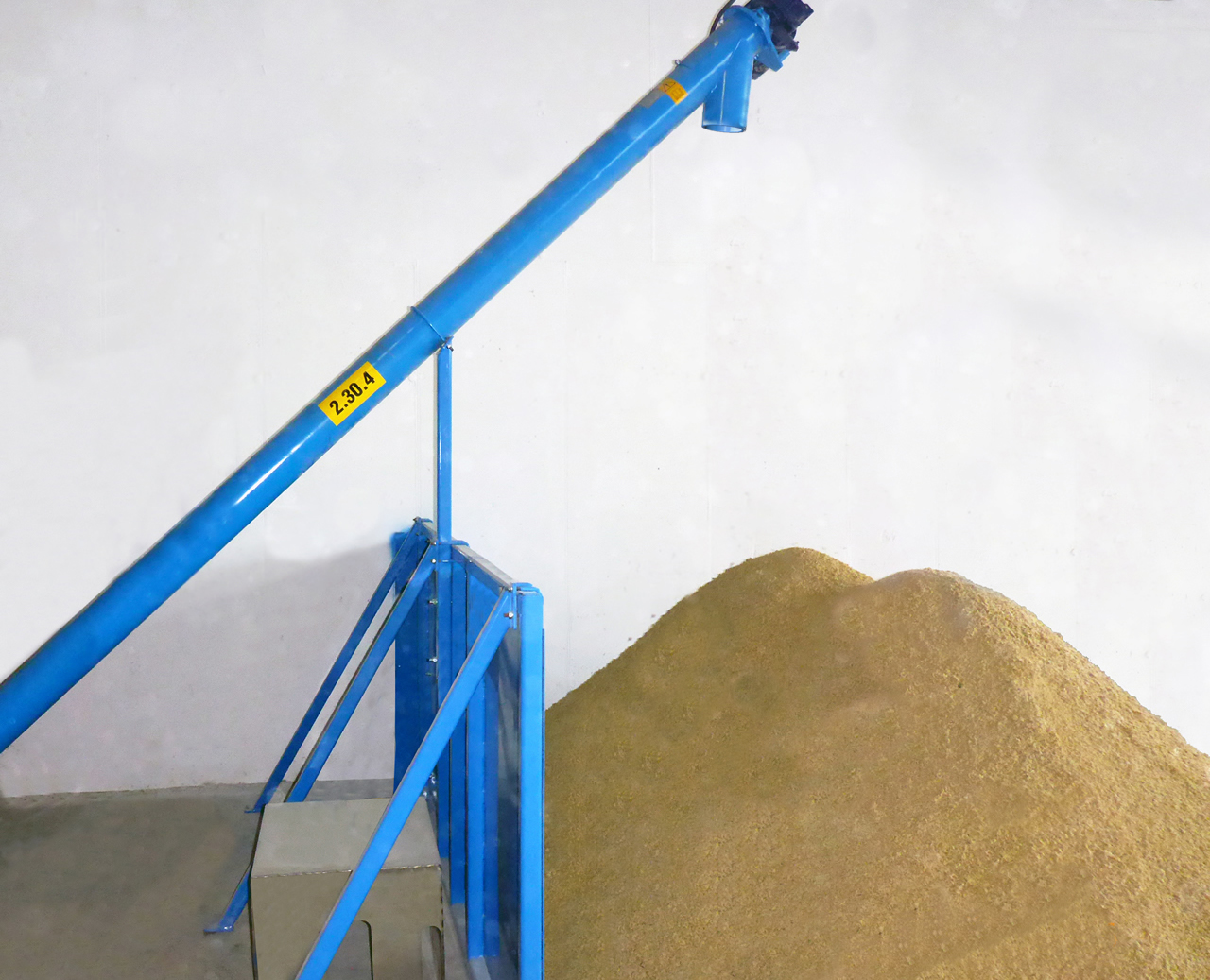
Oilseed comes from the intermediate bunker through the magnetic separator into the inclined dosing conveyor controlled via a frequency converter. Further the seed continues into the cleaning section. Cleaned oilseed then passes through the temperature stabilization (in winter period it is heated up to temperature of 15-20 °C) and continues into the pre-press hopper.

Press FL 200 is implemented in this technology as a “full-press” configuration. The modular pressing line can be fitted with one to four FL 200 presses.
The press FL 200 is used as a pre-press. The pressing cake is then conveyed through the inclined conveyor into the FL 200 final press.
The raw material is led into the hopper and passed into the extruder FE 250, where the process of material extrusion takes place. Afterwards, the material continues through the inclined conveyor into the FL 200 final press. This technology is designated mainly for soybeans.
The press FL 200 is used as a pre-press. The pressing cake from the pre-press falls into a hopper and continues into the extruder FE 250, where the process of extrusion takes place (mechanical kneading, short-term heating to high temperature under high pressure, with consequent expansion). The extruded material continues through the inclined conveyor to the FL 200 final press.

The separation tank is equipped with an automatic drainage that is picked from the tank by the blades on the chain conveyor. Separation of the solids is carried out on a sieve and the solid particles are returned to the press once again where it is mixed together with the pressing cakes from pre-presses or with an extrudate. In the separation tank, the oil can be heated by means of heating rods to facilitate filtration. This is especially important when filtering soybean and sunflower oil.

For all technologies, oil expelled from the presses FL 200 is retained in the sedimentation tank, which forms an integral part of the module. The tank is equipped with automatic removal of solids, which are consequently returned for re-pressing into the final press. Oil is consequently pumped into a manually-cleaned plate filter. Filtered oil then continues into oil storage tanks (see options).

Pressing cake is conveyed via the tube-type screw conveyer out of the module of the pressing line, beyond the partition structure, which forms the pressing cake storage.

Two levels of control, CLASSIC and CLEVER, can be selected for the COMPACT modular pressing shop.
Includes complete electrical installation to drive and control all devices, based on classical elements (contactors and relays). Sensors control the overpressure backfill, the maximum extruder temperature, and the maximum oil level in the tank to automatically stop material dosing into the Press section in the event of a failure. The control is done by the buttons on the switchboard, which is an integral part of the pressing module. The material dosing (line power) can be controlled by adjusting the speed of the feed conveyor. The control system also includes control of heating elements of the heating conveyor and sedimentation tank, including the possibility of setting the temperature and automatically monitoring the maximum temperature.
This version does not include computer control or visualization.
